Key takeaways:
- Microservices architecture enhances flexibility and team ownership, fostering independent innovation and effective inter-service communication through APIs.
- Choosing the appropriate database for each microservice is crucial for performance; understanding specific data needs allows for optimized and tailored database solutions.
- Scaling microservices effectively involves adopting a database-per-service pattern and anticipating workload patterns, helping to improve deployment speed and user experience.
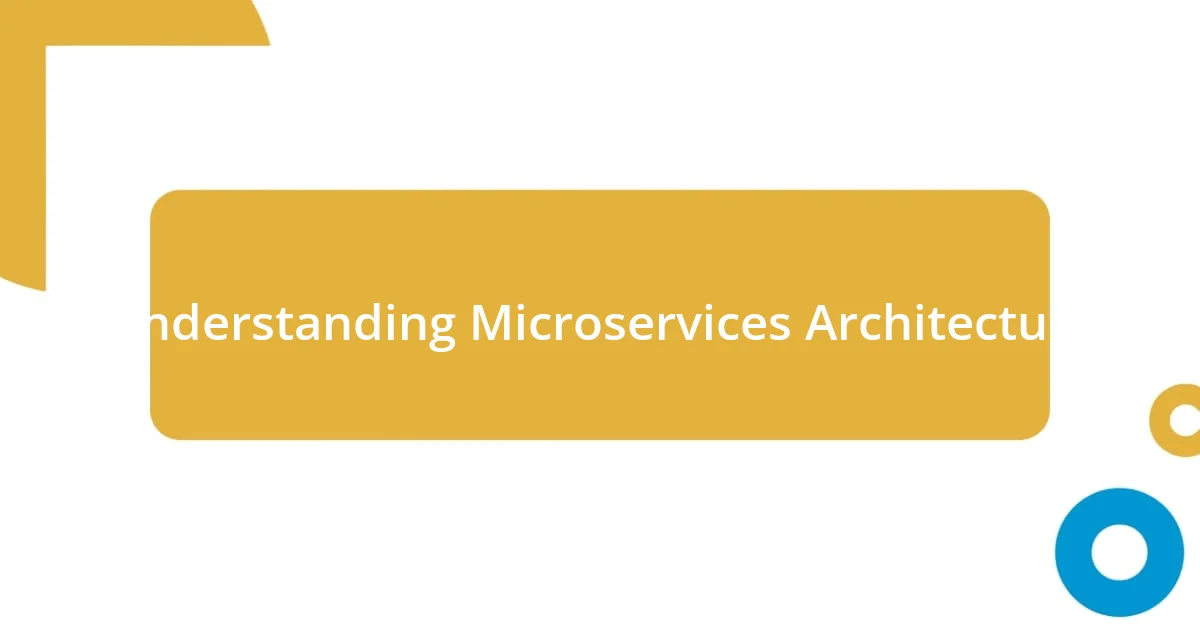
Understanding Microservices Architecture
Microservices architecture, at its core, breaks down applications into small, self-contained services that can independently deploy and scale. I remember when I first encountered this architecture; the flexibility it offered was like a breath of fresh air after working with monolithic systems. It felt liberating to realize that each service focuses on a specific business function, allowing teams to innovate at their own pace.
As I started to implement microservices in my projects, I soon understood the importance of communication between these small units. Have you ever tried to coordinate a group project where everyone is working on a different part? It can be a challenge. That’s why using APIs (Application Programming Interfaces) not only becomes essential for inter-service communication but also sets clear contracts that define how these services interact, giving structure to the overall system.
With microservices, you are not just designing software; you’re also embracing a cultural shift in how teams collaborate. I often found myself in spirited discussions with colleagues about best practices, and those moments of shared problem-solving highlighted how the architecture fosters a sense of ownership and accountability. It’s rewarding to see how each team takes pride in their service, creating a vibrant ecosystem that drives the organization forward.
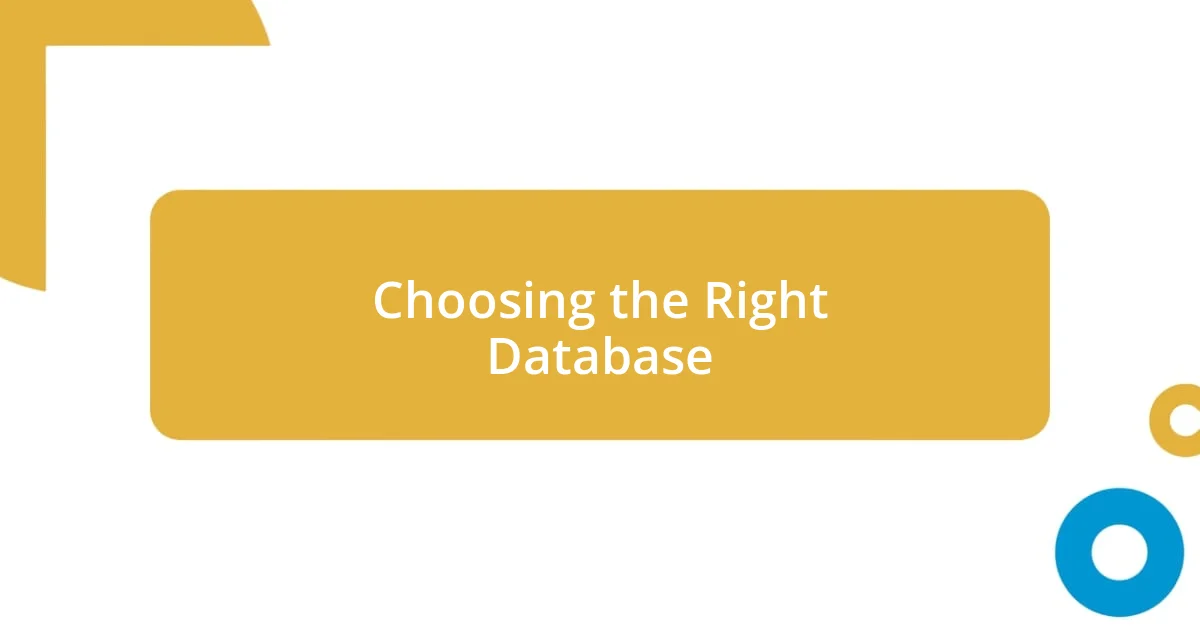
Choosing the Right Database
Choosing the right database for your microservices is crucial because it can drastically affect the system’s performance and scalability. While working on a recent project, I discovered how different databases suit various needs. For example, I had a service that processed real-time data streams and found that a NoSQL database like MongoDB was more efficient than traditional relational databases, which would have struggled to keep up with the high write demands.
When considering various options, think about factors like data structure, transaction needs, and how your services will communicate. In one of my earlier projects, I opted for PostgreSQL to leverage its strong support for complex queries. I quickly learned that understanding the nature of each service’s data requirements meant I could implement more tailored solutions. It was a game-changer in optimizing my application’s efficiency.
Here’s a quick comparison that illustrates some popular database options and their strengths:
| Database Type | Best Use Case |
|---|---|
| SQL | Complex Querying |
| NoSQL | High Scalability |
| Graph | Relationship Mapping |
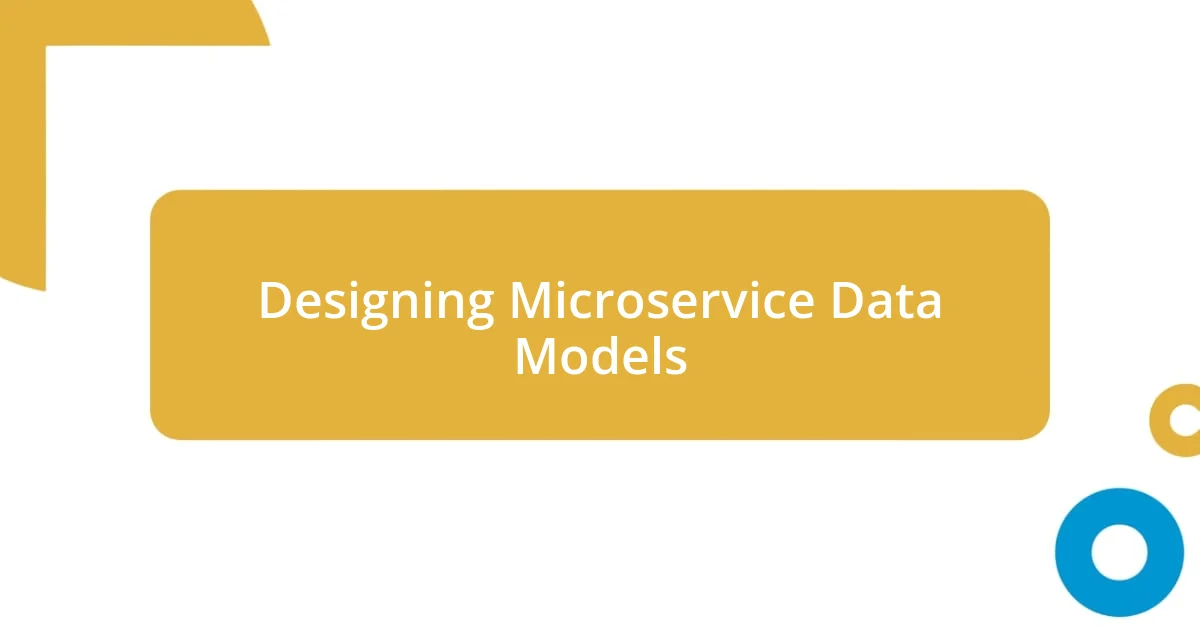
Designing Microservice Data Models
Designing data models for microservices requires a thoughtful approach that embraces the unique needs of each service. I vividly recall the first time I sat down to define data structures for a microservice project. It felt overwhelming to consider each service independently, but I quickly learned that a well-defined data model not only ensures clarity but also facilitates easier updates and scaling down the line. It’s important to think about how your data will evolve as the business grows, which often sparks unexpected creativity.
When I’m designing these models, I focus on a few critical aspects:
- Bounded Context: Clearly define what each microservice is responsible for and how its data fits within that scope.
- Data Ownership: Ensure each microservice owns its data, preventing tight coupling with others.
- Event Sourcing: Consider using event sourcing to keep track of state changes, which can help in maintaining a history of transactions.
- Schema Evolution: Anticipate changes in data structures and plan for how to handle migrations seamlessly.
I’ve found that incorporating these strategies not only sets a solid foundation but also fosters an environment where changes can happen more fluidly, allowing teams to pivot when needed. The support from my colleagues while brainstorming these ideas created a shared vision that we all felt invested in. It’s intriguing how the right data model can transform collaboration and create a more resilient architecture.
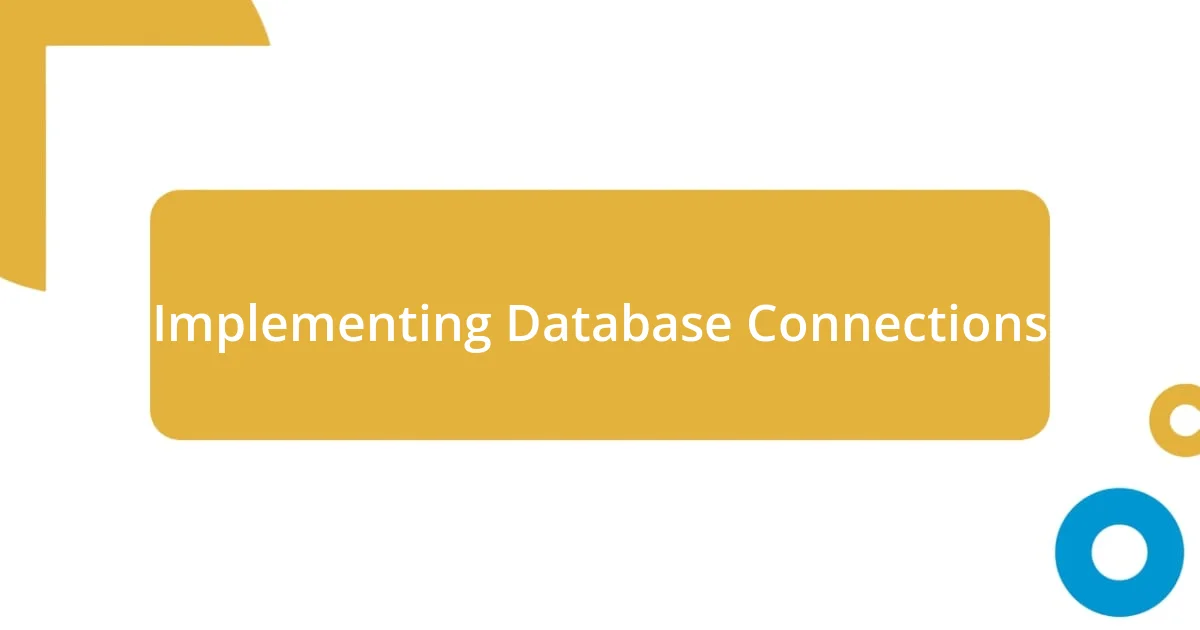
Implementing Database Connections
When I set out to implement database connections in my microservices, I found that clarity and efficiency were paramount. Initially, I used a connection pool to manage database connections, which helped streamline requests and improved performance significantly. It was a real eye-opener—watching the application respond so much faster when I streamlined how connections were managed.
One time, I encountered a scenario where a microservice was barely keeping up with the demand. I realized that underestimating the database connection setup would directly impact user experience. By refining the connection parameters and adjusting settings like the maximum number of connections, I could alleviate bottlenecks, ensuring that requests flowed smoothly. Have you ever felt the frustration of lag in an application? That push to optimize those connections felt like a turning point for me.
In another project, I experimented with asynchronous calls to the database. This approach was a game-changer, enabling my services to handle more requests by not blocking operations while waiting for database responses. It made me reflect on how important it is to evolve with technology—sometimes, all it takes is a subtle shift in strategy to unlock the true potential of your architecture.
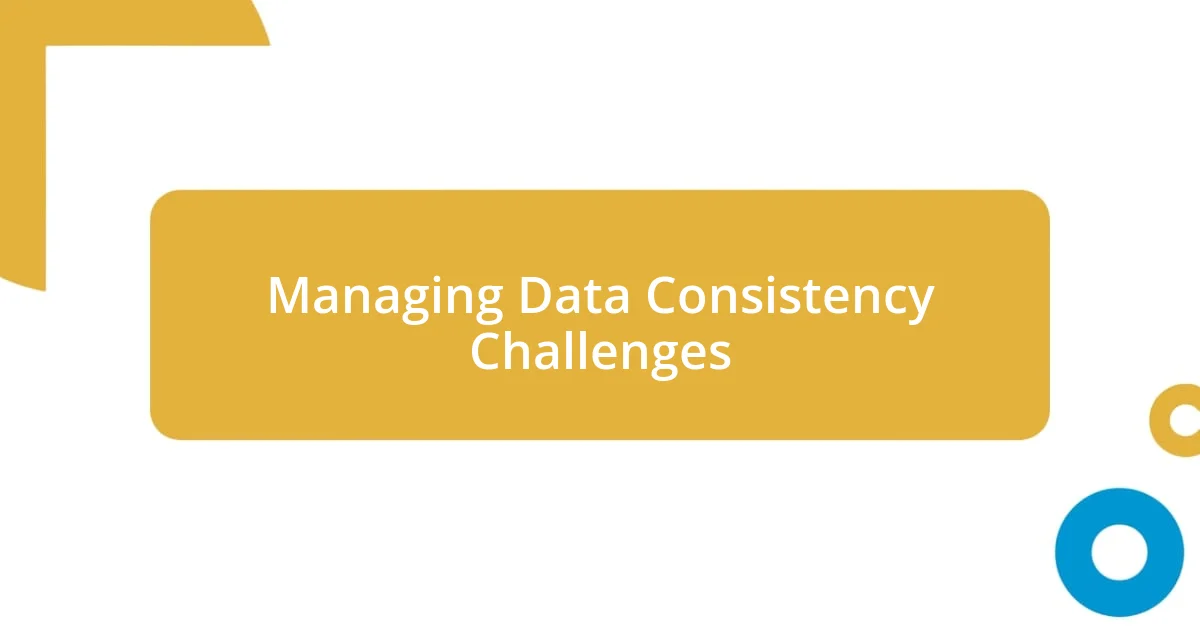
Managing Data Consistency Challenges
Managing data consistency in a microservices architecture can pose quite a challenge, especially when you think about the implications of eventual consistency. In one of my projects, we faced an instance where data updates across services didn’t synchronize immediately, leading to discrepancies that puzzled the team. It was a pivotal moment for me, as I realized the importance of understanding the business context behind data changes and having robust mechanisms in place to handle them.
I’ve found that using distributed transactions can help, but they come with their own set of complexities. I once led a brainstorming session where we debated the pros and cons of implementing a two-phase commit protocol. While it sounds like a straightforward solution, I could sense the hesitation in the room. The concern was about potential performance hits and complications during failures. Have you ever had that uneasy feeling about using a technology despite its theoretical benefits? Engaging that skepticism often leads to deeper, more practical solutions that better fit the use case.
Additionally, I’ve started to explore the use of message queues and change data capture (CDC) as strategies to maintain consistency. In a recent application, we decided to incorporate event-driven architecture where each microservice published events upon data changes. This approach not only clarified ownership but also created a clear pathway for other services to react to those changes. I still remember the excitement in the team when we saw how smoothly data flowed among services, reinforcing my belief in the power of thoughtful design in managing consistency.
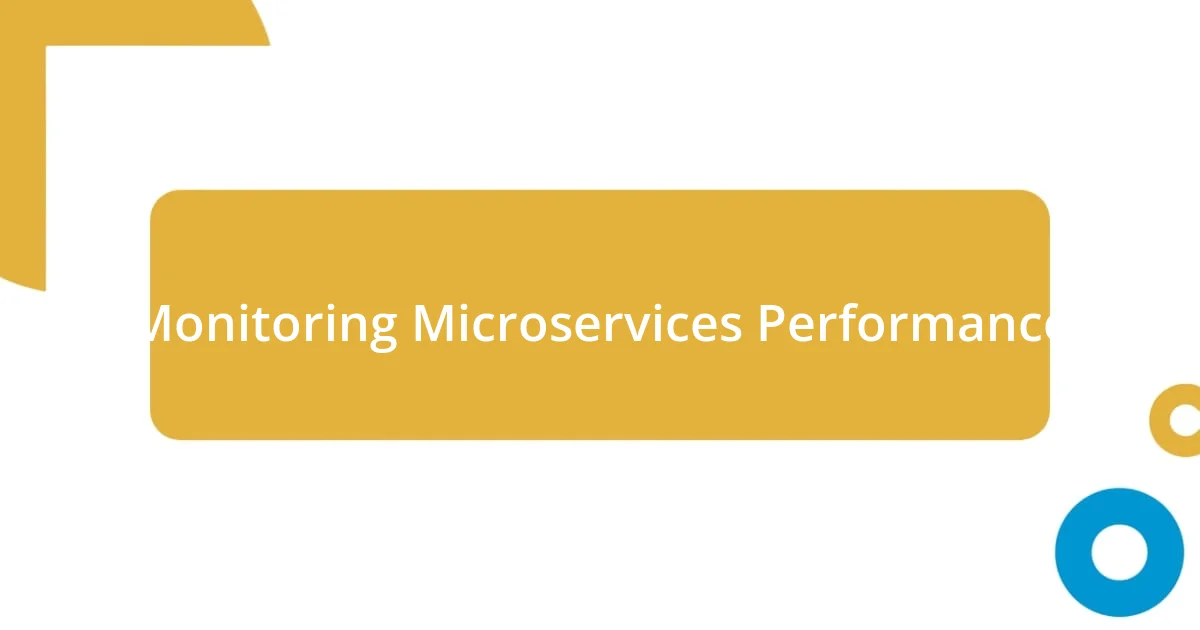
Monitoring Microservices Performance
Monitoring the performance of microservices is crucial to understanding how well they operate. I’ve often relied on tools like Prometheus and Grafana to collect and visualize metrics. There’s something satisfying about seeing real-time data—it’s like peering into the heartbeat of your application. Have you ever experienced that moment of clarity when a simple graph reveals performance bottlenecks you never noticed before?
One of my memorable experiences with monitoring involved a sudden spike in latency that puzzled our team. As we dug into the metrics, it became clear that one microservice’s response time was exceeding thresholds due to an unexpected increase in incoming requests. By setting up automatic alerts, we were able to swiftly react before users felt the impact. That instance taught me just how vital proactive monitoring can be—like having a watchful guardian for your architecture.
Over time, I’ve also realized the importance of tracing requests across microservices. During a project, I implemented an OpenTracing solution that allowed me to visualize the flow of requests. Seeing the intricate dance of data as it moved between services not only intrigued me but also illuminated where optimizations were needed. I can’t help but wonder—how many insights could remain hidden if we didn’t invest in this level of visibility? It’s moments like these that reinforce my viewpoint: a well-monitored ecosystem is a thriving one.
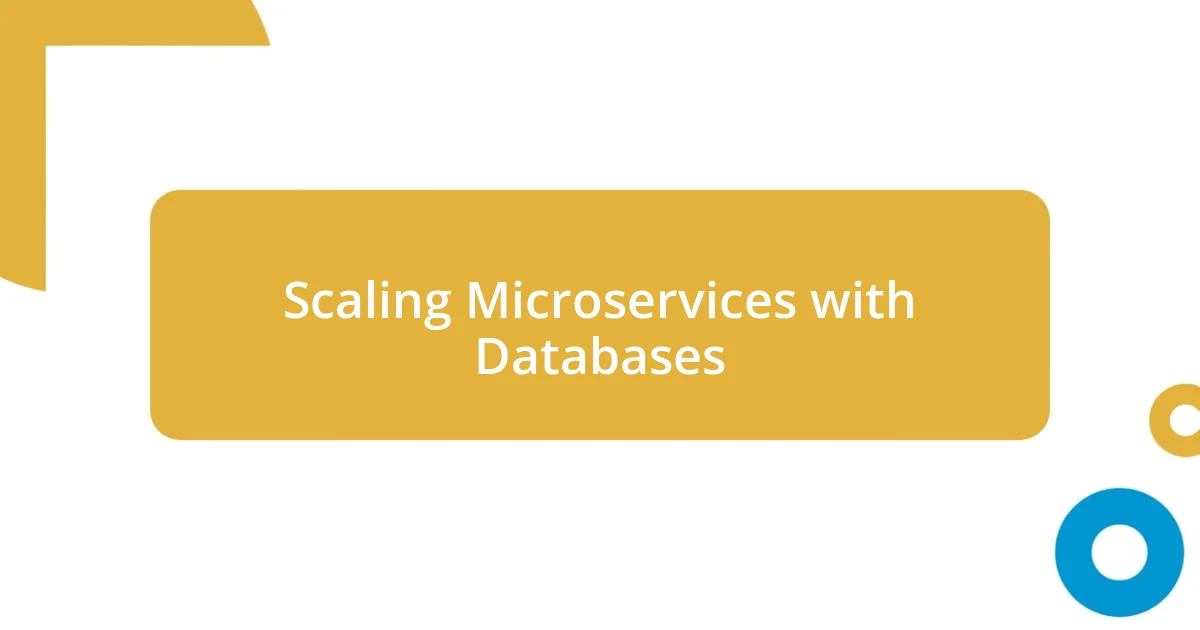
Scaling Microservices with Databases
Scaling microservices often requires a thoughtful approach to database integration. I remember collaborating on a project where we gradually decomposed a monolithic application into microservices. We initially centralized our database, thinking it would simplify things. Boy, were we in for a surprise! As the number of microservices grew, so did the contention on that one database, leading to performance issues that took us a while to untangle. Have you ever found yourself stuck in a similar situation, where a well-intentioned decision backfired?
In one of my more successful shifts, we chose to implement a database-per-service pattern. Each microservice owned its database, allowing them to scale independently. The moment we made that change, I felt this invigorating shift in our deployment speed. I vividly remember how the team’s enthusiasm grew as we realized that we could deploy each service without waiting for a monolithic release. It was liberating—like removing weights from our legs during a race. It made me wonder: how often do we limit our capabilities by trying to do too much at once?
But scaling microservices is not just about the architecture; it’s also about understanding workload patterns. In one instance, I faced an elastic load with user-driven demand spikes. To tackle this, I incorporated read replicas for our databases, enabling us to distribute the load during peak times. It felt almost magical watching the application handle requests effortlessly, reinforcing my belief that choosing the right scaling strategy—whether vertical or horizontal—can truly transform user experiences. Have you ever witnessed the power of scaling done right? Those moments are what drive me to keep exploring and refining my approach.












